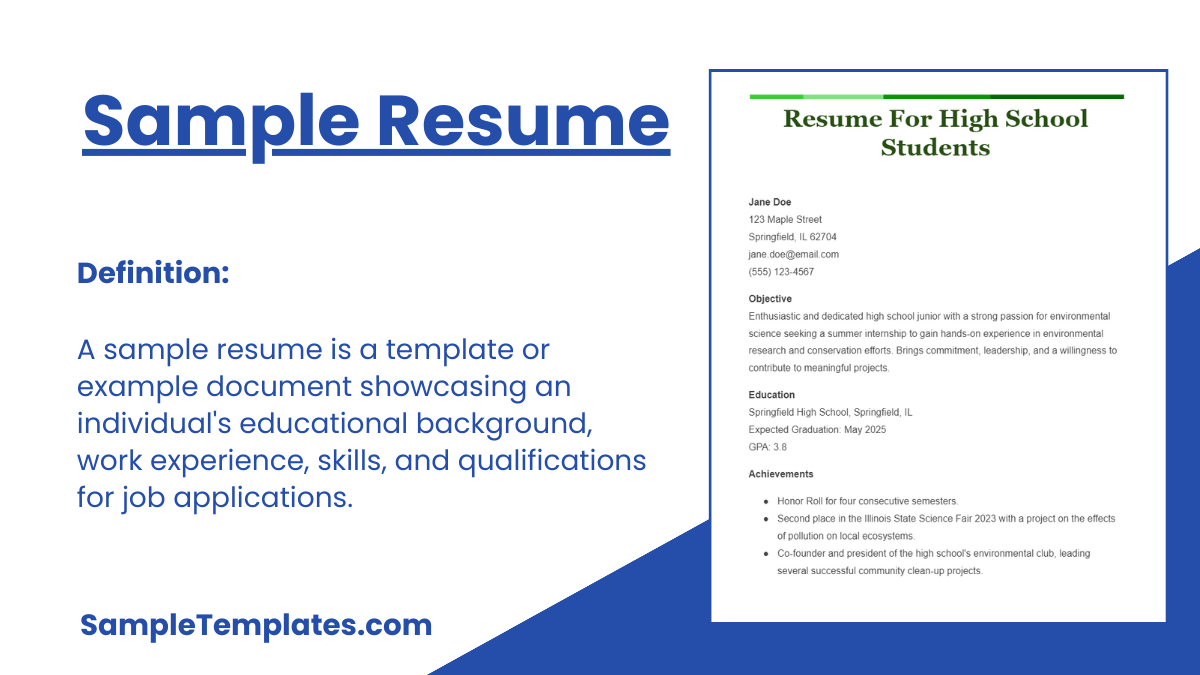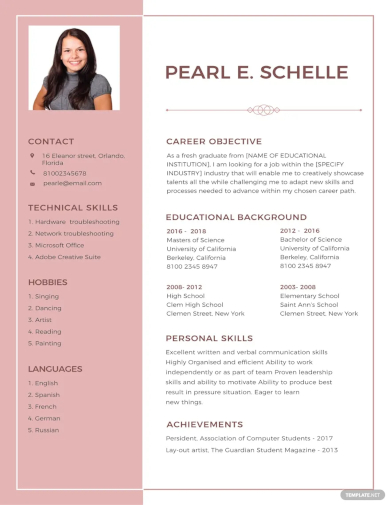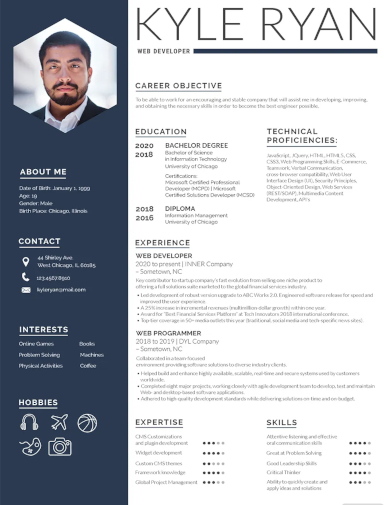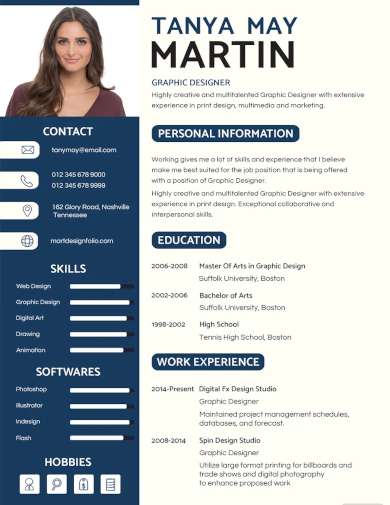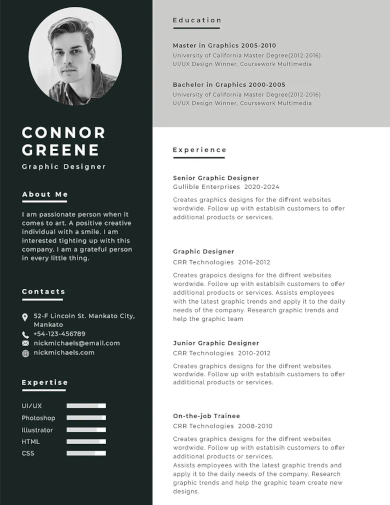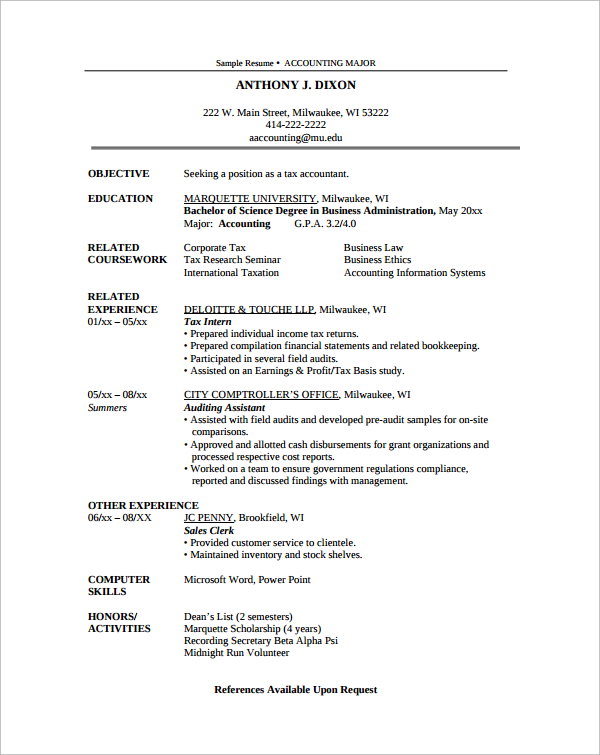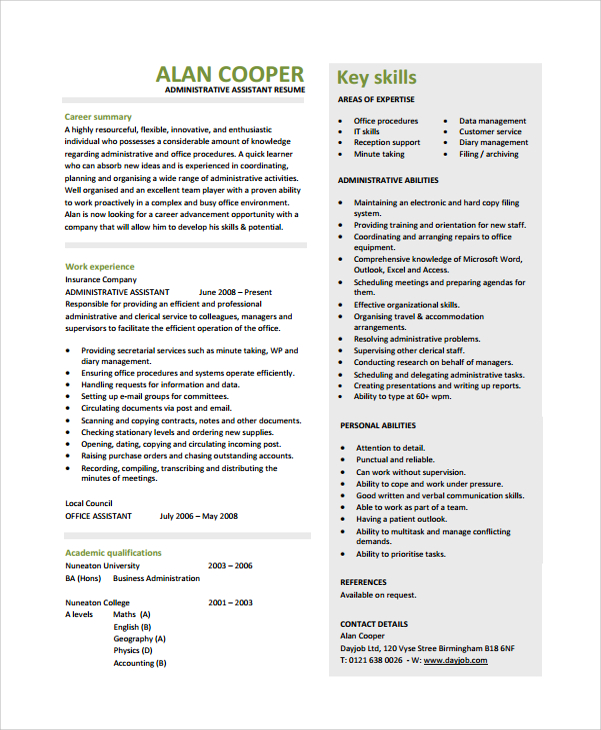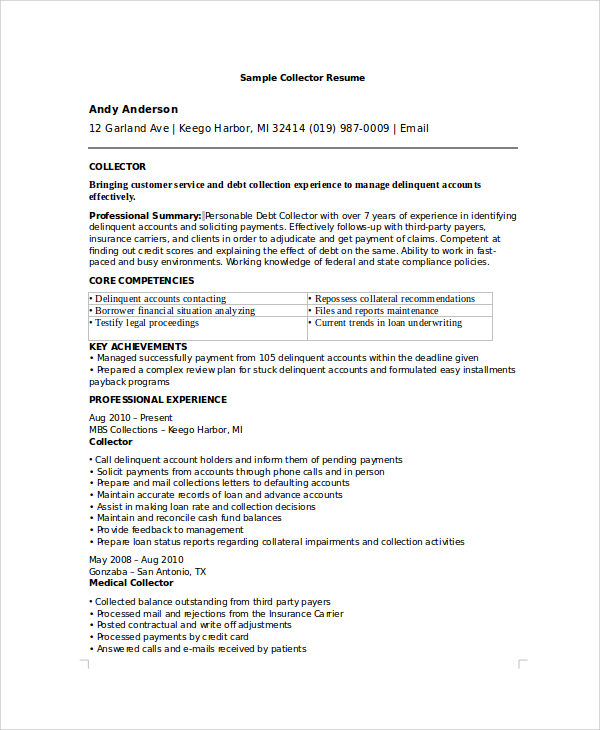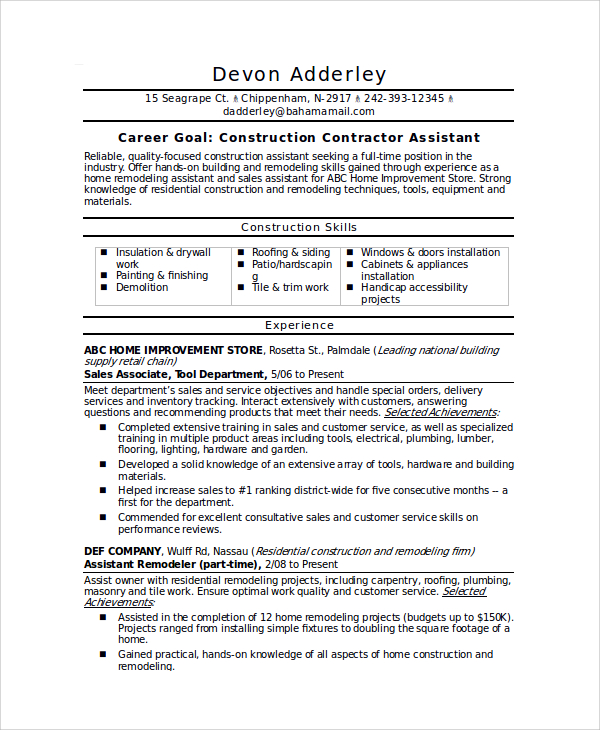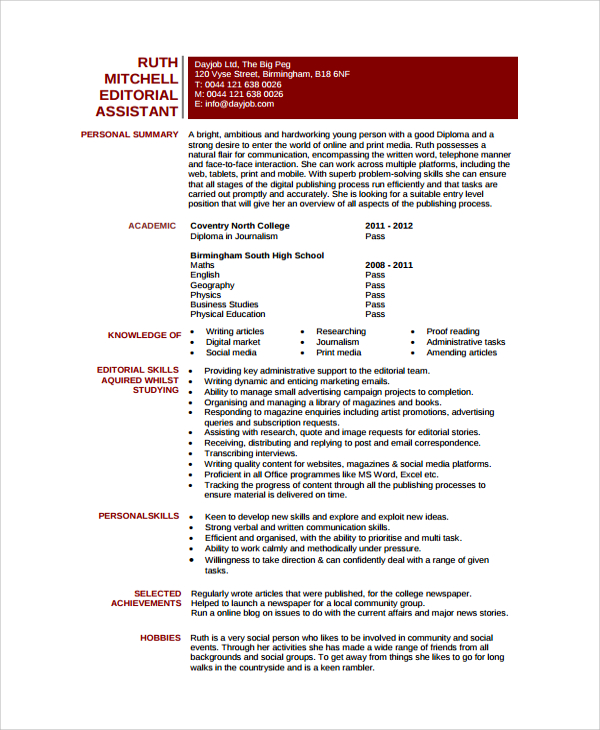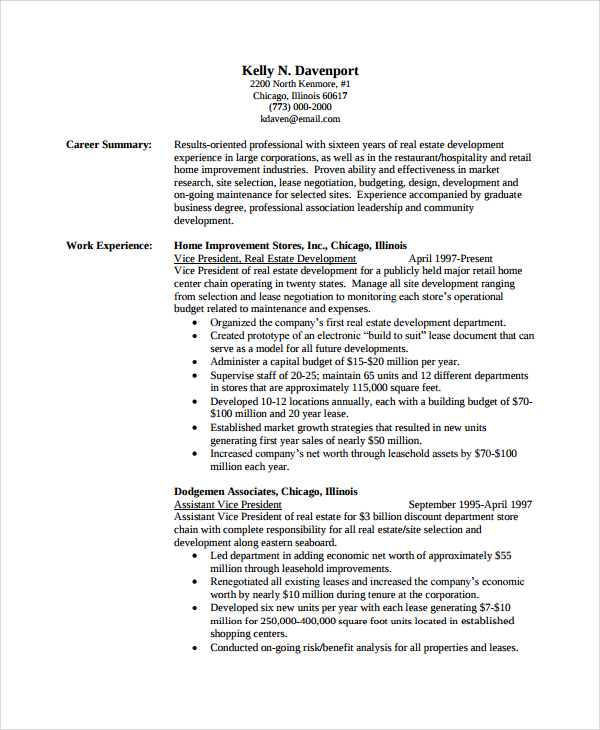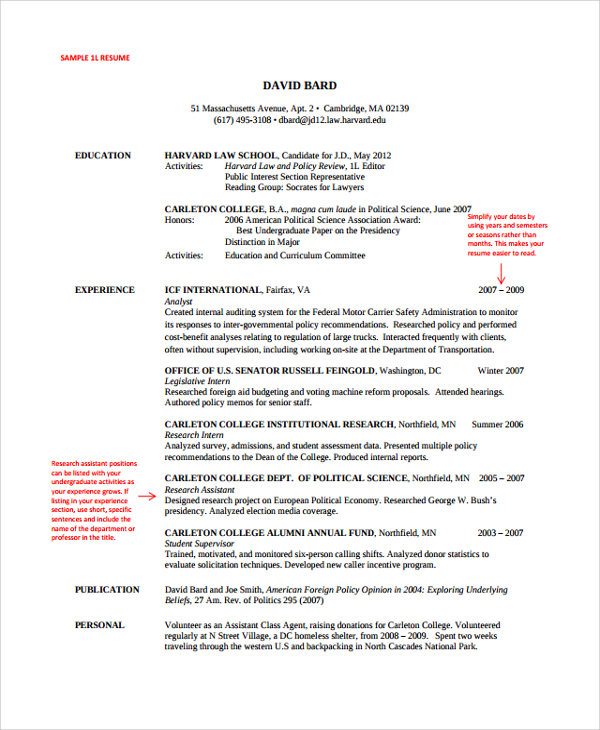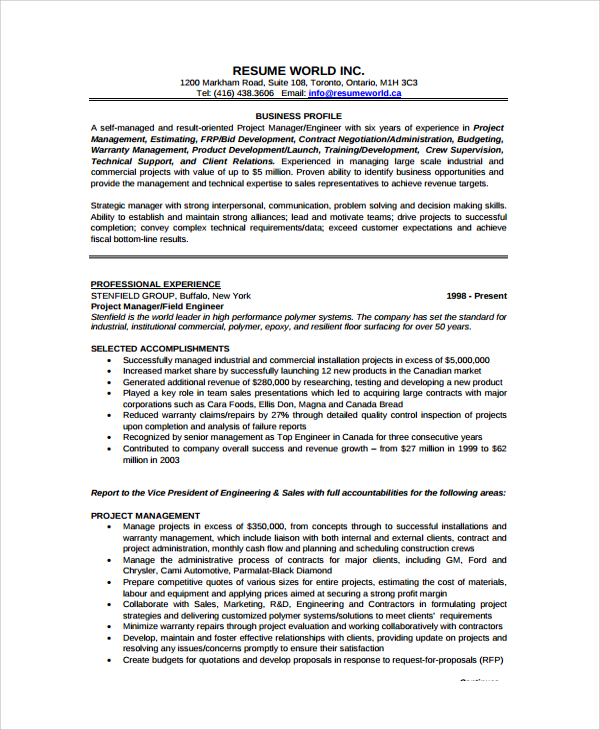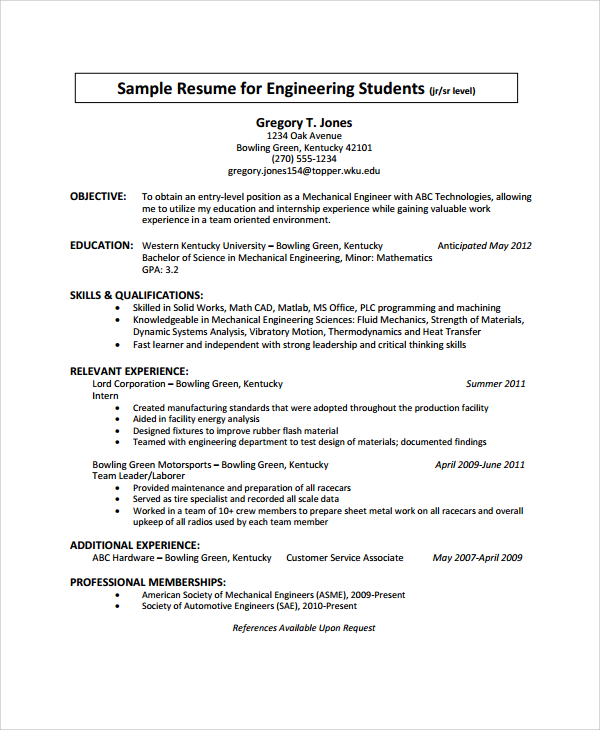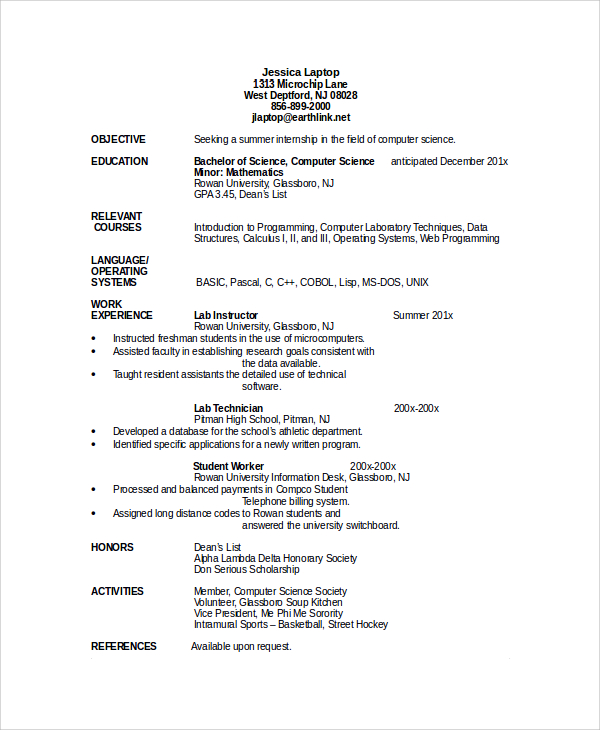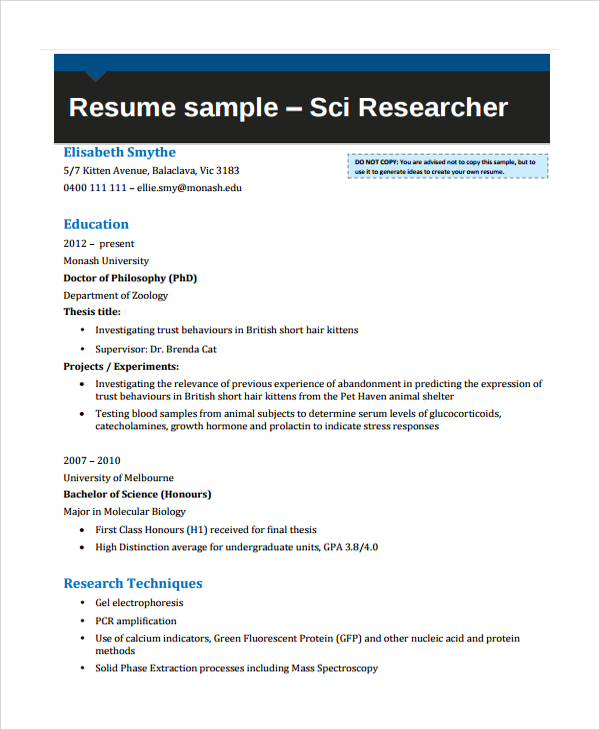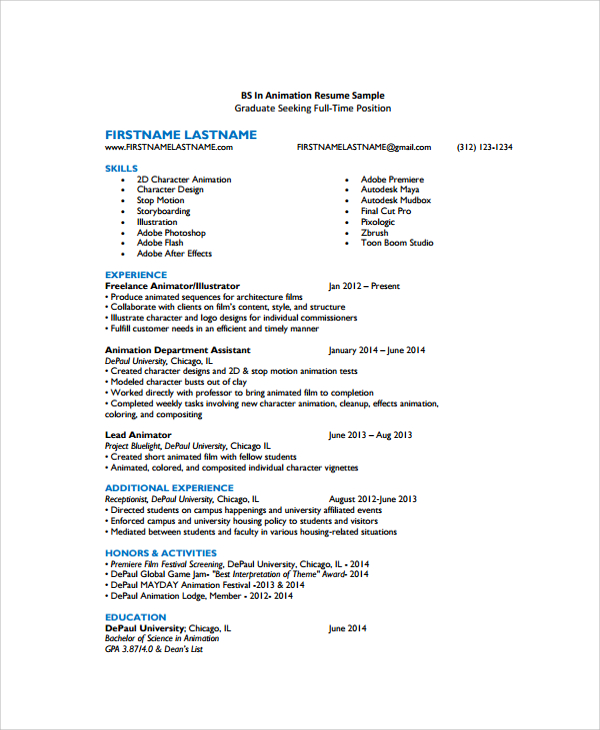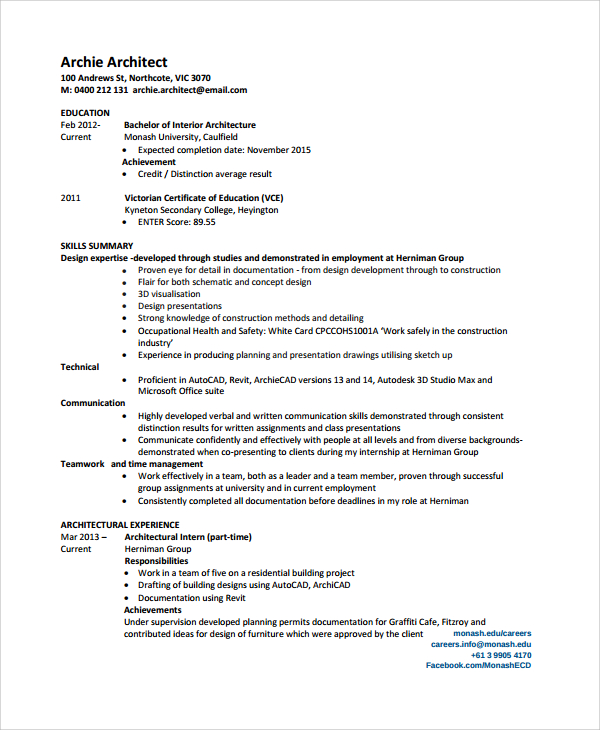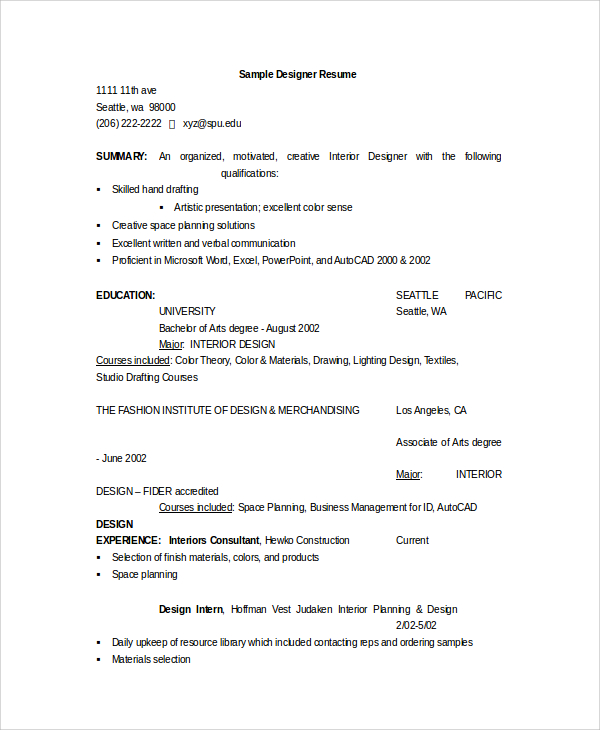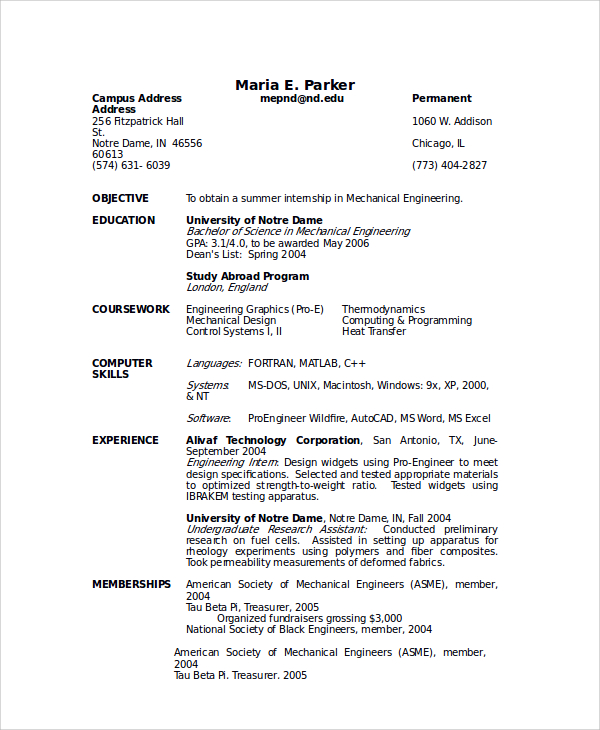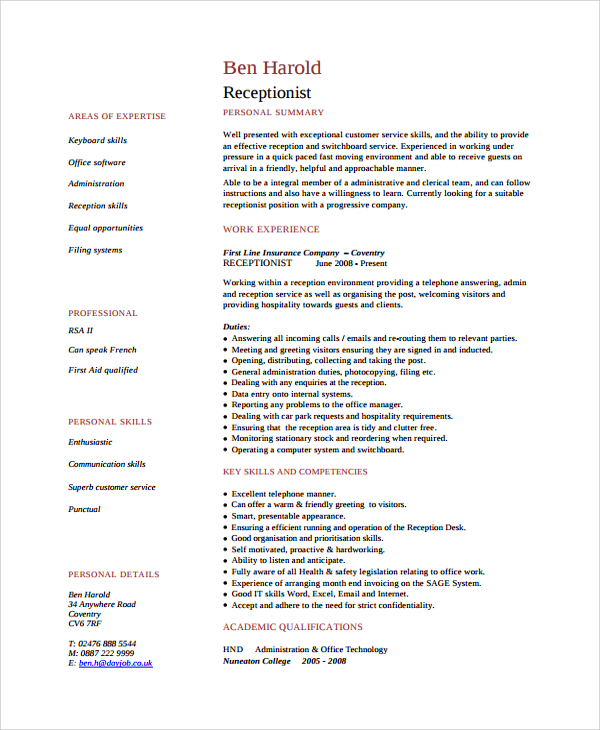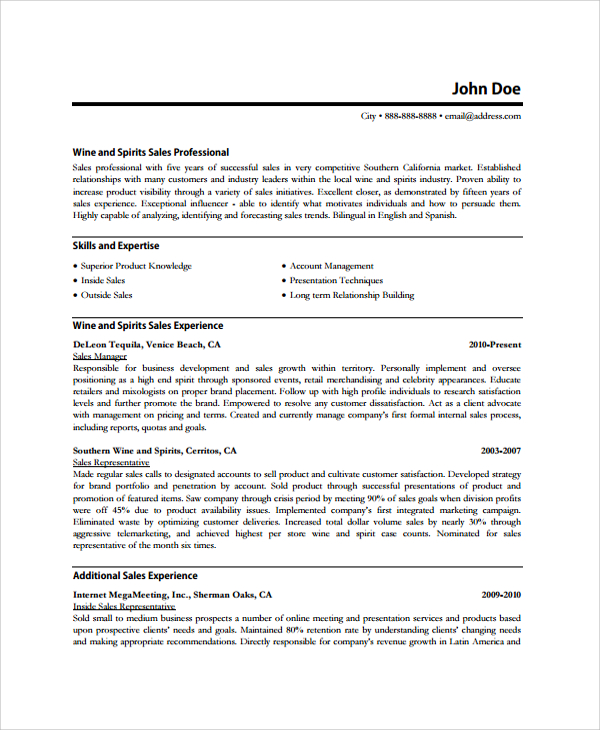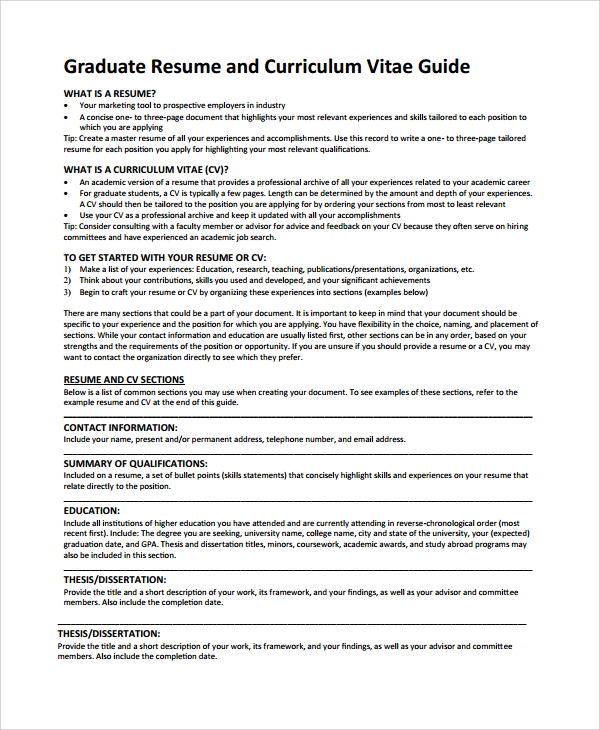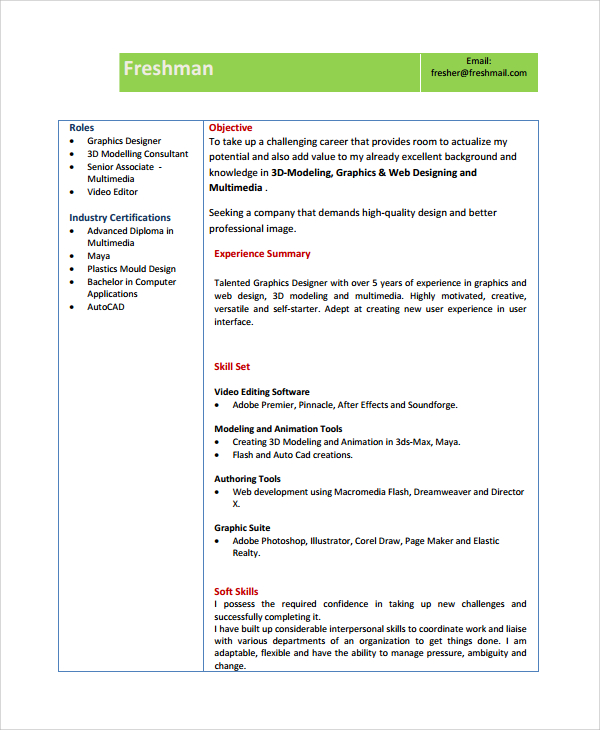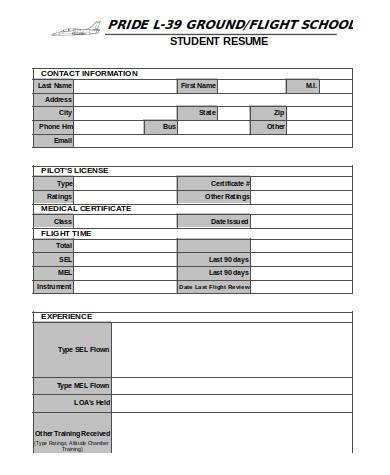A resume is the most important tool for job application. It is not possible to apply for a job without a resume. Thus, building this essential tool for job application should be a careful approach. For that reason, you need to write a resume in a professional way. Many people do not know the art to write a good resume; they can select online free resume templates to make the process easier. Another alternative way is downloading Sample Resumes and writing your resume by following that sample.
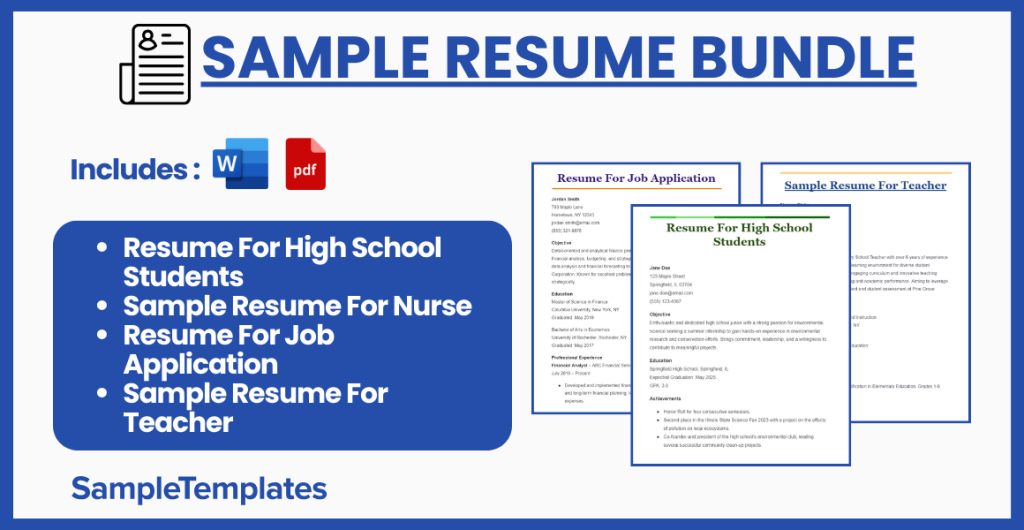
Resume For High School Students
Jane Doe
123 Maple Street
Springfield, IL 62704
jane.doe@email.com
(555) 123-4567
Objective
Enthusiastic and dedicated high school junior with a strong passion for environmental science seeking a summer internship to gain hands-on experience in environmental research and conservation efforts. Brings commitment, leadership, and a willingness to contribute to meaningful projects.
Education
Springfield High School, Springfield, IL
Expected Graduation: May 2025
GPA: 3.8
Achievements
- Honor Roll for four consecutive semesters.
- Second place in the Illinois State Science Fair 2023 with a project on the effects of pollution on local ecosystems.
- Co-founder and president of the high school’s environmental club, leading several successful community clean-up projects.
Experience
Volunteer Coordinator – Springfield Community Center, Springfield, IL
June 2023 – August 2023
- Organized weekly volunteering events, including local park clean-ups and recycling drives, engaging over 30 participants each time.
- Coordinated with local businesses to sponsor environmental awareness campaigns, increasing community participation by 25%.
Volunteer Work
Tutor – Springfield Literacy Program, Springfield, IL
September 2022 – Present
- Tutor underprivileged elementary school students in math and science, helping improve their test scores by an average of 20%.
- Developed interactive learning materials that enhanced students’ interest in science.
Skills
- Proficient in Microsoft Office Suite (Word, Excel, PowerPoint)
- Effective communication and teamwork skills
- Basic knowledge of Python and environmental data analysis
Extracurricular Activities
- President of the Environmental Club, leading initiatives on sustainability and conservation.
- Member of the varsity tennis team, contributing to team strategy and mentoring younger players.
- Active participant in the school’s science club, organizing guest speaker events and science workshops.
Certifications
- CPR and First Aid Certified by the American Red Cross, March 2023
- Introduction to Python Programming, Certificate of Completion, Coursera, July 2023
References
Available upon request.
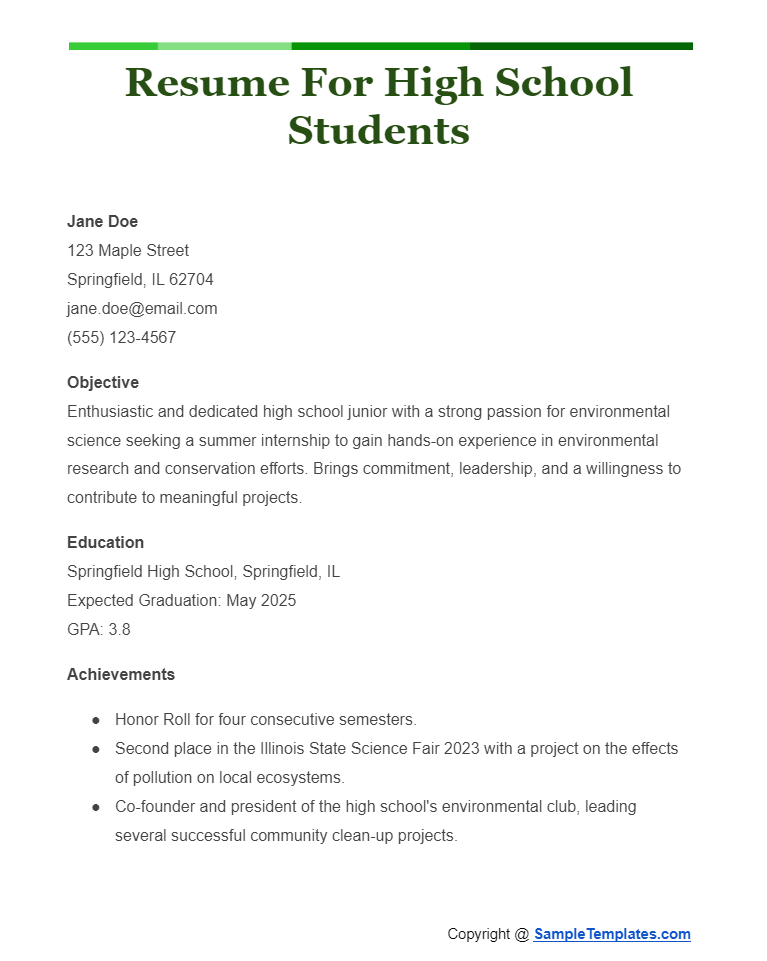
Sample Resume For Nurse
Alexandra M. Johnson
456 Healthway Drive
Nursingtown, PA 54321
alexandra.m.johnson@email.com
(555) 234-5678
Professional Summary
Compassionate and dedicated Registered Nurse with over 5 years of experience in providing high-quality patient care in hospital and clinical settings. Skilled in patient assessment, developing nursing care plans, medication administration, and emergency care. Committed to improving patient health outcomes and fostering a supportive environment for patients, families, and staff.
Licenses and Certifications
- Registered Nurse (RN), Pennsylvania, License #PARN123456
- Basic Life Support (BLS) Certified
- Advanced Cardiovascular Life Support (ACLS) Certified
- Pediatric Advanced Life Support (PALS) Certified
Education
Bachelor of Science in Nursing (BSN)
University of Pennsylvania, Philadelphia, PA
Graduated: May 2016
Clinical Experience
Registered Nurse – Philadelphia General Hospital, Philadelphia, PA
July 2016 – Present
- Provided comprehensive nursing care to patients in the emergency room, managing caseloads of up to 20 patients per shift.
- Conducted thorough patient assessments, developed and implemented individualized care plans, and monitored patient progress.
- Administered medications, performed wound care, and assisted with life-saving procedures under physician supervision.
- Educated patients and families on disease management, medication, and lifestyle adjustments, significantly improving patient satisfaction scores.
- Collaborated with interdisciplinary teams to ensure optimal patient care, resulting in a 15% decrease in hospital readmission rates.
Staff Nurse – Sunnydale Long-Term Care Facility, Nursingtown, PA
May 2016 – July 2016
- Assisted in the daily care of elderly patients, providing support with hygiene, nutrition, and mobility.
- Monitored vital signs and symptoms, reporting any changes to the attending nurse or physician.
- Played a key role in patient and family education sessions, promoting health and wellness.
- Maintained a clean and safe environment for patients and staff by adhering to infection control policies.
Skills
- Strong clinical skills in emergency care, patient assessment, and wound care
- Excellent communication and interpersonal skills
- Proficient in electronic health record (EHR) systems, including Epic
- Ability to work effectively in fast-paced, high-stress environments
- Compassionate and patient-centered approach to nursing care
Professional Affiliations
- Member, American Nurses Association
- Member, Emergency Nurses Association
References Available upon request.
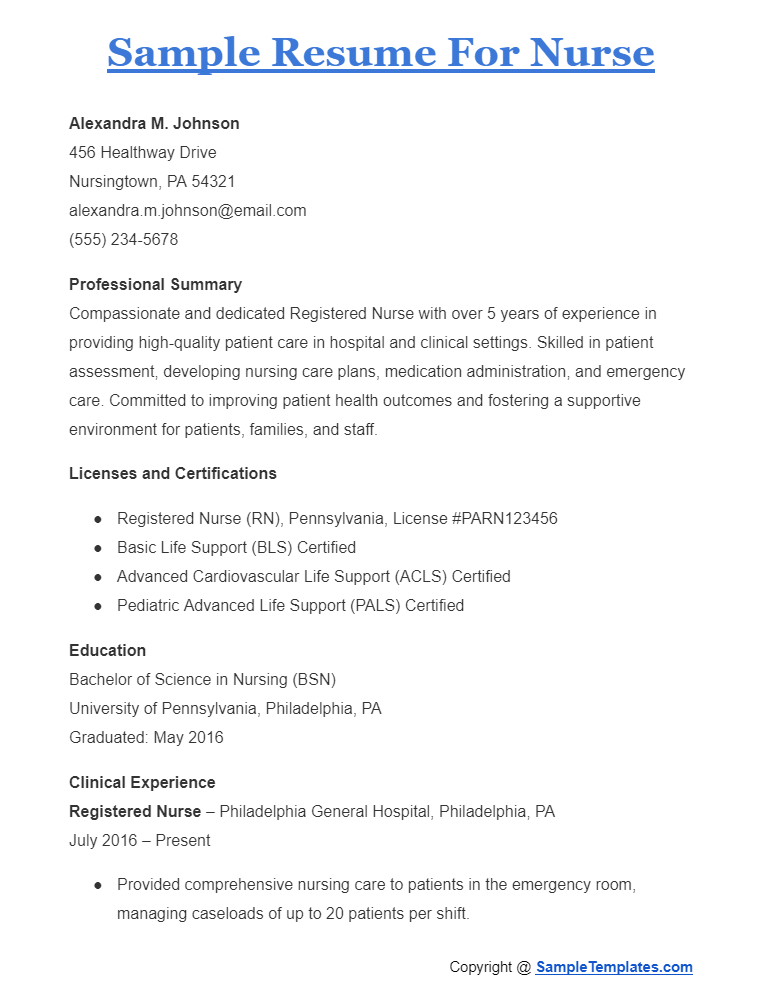
Resume For Job Application
Jordan Smith
789 Maple Lane
Hometown, NY 12345
jordan.smith@email.com
(555) 321-9876
Objective
Detail-oriented and analytical finance professional with over 3 years of experience in financial analysis, budgeting, and strategic planning. Seeking to leverage expertise in data analysis and financial forecasting to contribute to the financial success of XYZ Corporation. Known for excellent problem-solving skills and a strong ability to think strategically.
Education
Master of Science in Finance
Columbia University, New York, NY
Graduated: May 2019
Bachelor of Arts in Economics
University of Rochester, Rochester, NY
Graduated: May 2017
Professional Experience
Financial Analyst – ABC Financial Services, New York, NY
July 2019 – Present
- Developed and implemented financial models for forecasting, variance analysis, and long-term financial planning, leading to a 10% reduction in unforeseen expenses.
- Conducted comprehensive analysis on financial performance, trends, and forecasts, which contributed to strategic decision-making and a 15% increase in profitability over two years.
- Collaborated with cross-functional teams to prepare annual budgets, resulting in an optimized allocation of resources and a 5% decrease in operational costs.
- Provided analytical support for the negotiation of 5 major contracts, ensuring favorable terms and a 20% increase in cost savings.
Intern, Finance Department – DEF Corporation, Rochester, NY
June 2017 – August 2018
- Assisted in the preparation of monthly financial reports and analysis, improving the accuracy of financial data presented to management.
- Supported the finance team in managing and reconciling accounts payable and receivable, enhancing the efficiency of financial operations.
- Participated in the annual budgeting process, gaining insights into effective financial planning and cost management strategies.
Skills
- Proficient in financial modeling and forecasting
- Advanced skills in Excel, including pivot tables, VLOOKUP, and macros
- Strong analytical and problem-solving abilities
- Excellent communication and presentation skills
- Proficient in financial software, including QuickBooks and SAP
Certifications
- Certified Financial Analyst (CFA) – Level II Candidate
- Advanced Excel for Finance Professionals Certificate
Professional Affiliations
- Member, Association for Financial Professionals (AFP)
- Member, CFA Institute
References
Available upon request.
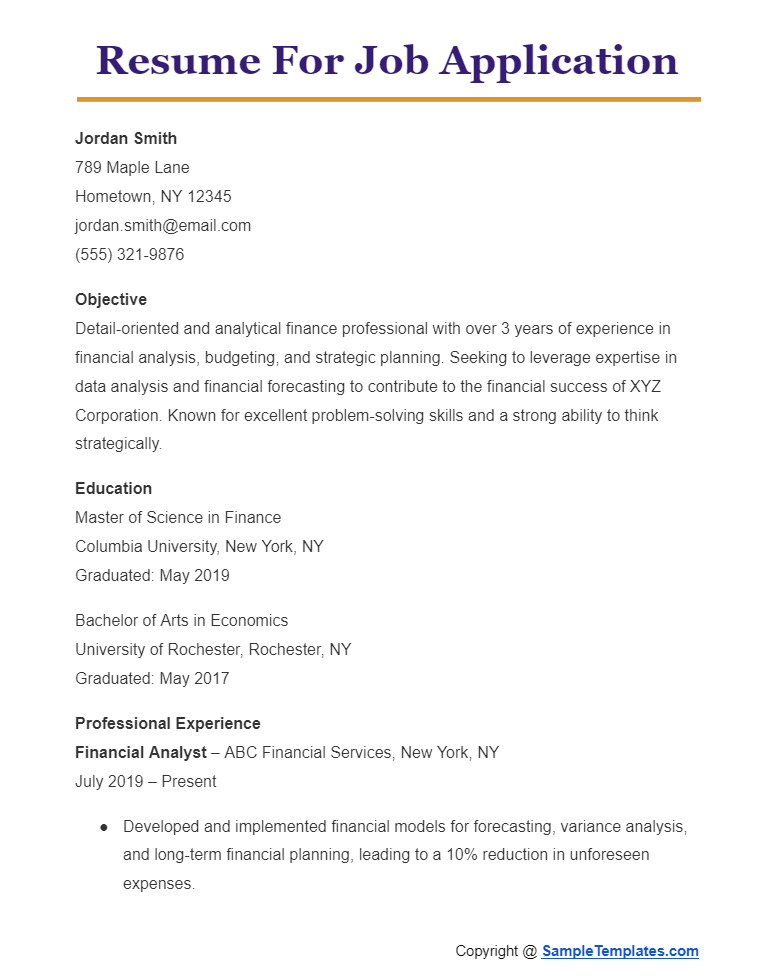
Sample Resume For Teacher
Eleanor Rigby
123 Harmony Road
Educatorstown, ED 45678
eleanor.rigby@schoolmail.com
(555) 678-1234
Objective
Passionate and dedicated Elementary School Teacher with over 6 years of experience fostering a nurturing and stimulating learning environment for diverse student populations. Specializes in creating engaging curriculum and innovative teaching strategies to enhance student learning and academic performance. Aiming to leverage my expertise in curriculum development and student assessment at Pine Grove Elementary School.
Education
Master of Education in Curriculum and Instruction
State University of New York, Albany, NY
Graduated: June 2018
Bachelor of Science in Elementary Education
Boston University, Boston, MA
Graduated: May 2015
Certifications
- New York State Teaching Certification in Elementary Education, Grades 1-6
- Certified Reading Specialist
Professional Experience
Elementary School Teacher – Sunnyside Elementary School, Educatorstown, ED
September 2018 – Present
- Designed and implemented lesson plans for a 4th-grade class of 30 students, resulting in a 20% improvement in reading and math standardized test scores.
- Integrated technology into the classroom with tools such as Smart Boards and tablets, enhancing student engagement and learning experiences.
- Collaborated with colleagues to develop a school-wide initiative on inclusive education, which significantly improved the integration of students with special needs.
- Led after-school tutoring program for students requiring extra help, which contributed to noticeable improvements in academic performance and self-confidence.
Student Teacher – Maplewood Elementary School, Boston, MA
September 2017 – June 2018
- Assisted in teaching a diverse classroom of 25 students in 3rd grade, focusing on mathematics and science.
- Developed and executed interactive learning activities, which were later adopted school-wide due to their effectiveness in student engagement.
- Participated in parent-teacher conferences, establishing strong communication channels between school and home.
Skills
- Proficient in curriculum development and assessment
- Strong classroom management skills
- Excellent communication and interpersonal abilities
- Skilled in integrating technology into learning
- Fluent in Spanish and English
Professional Development
- Workshop on Differentiated Instruction, SUNY, 2019
- Seminar on Classroom Technology Integration, Boston University, 2017
Professional Affiliations
- Member, National Education Association
- Member, New York State Teachers’ Association
References
Available upon request.
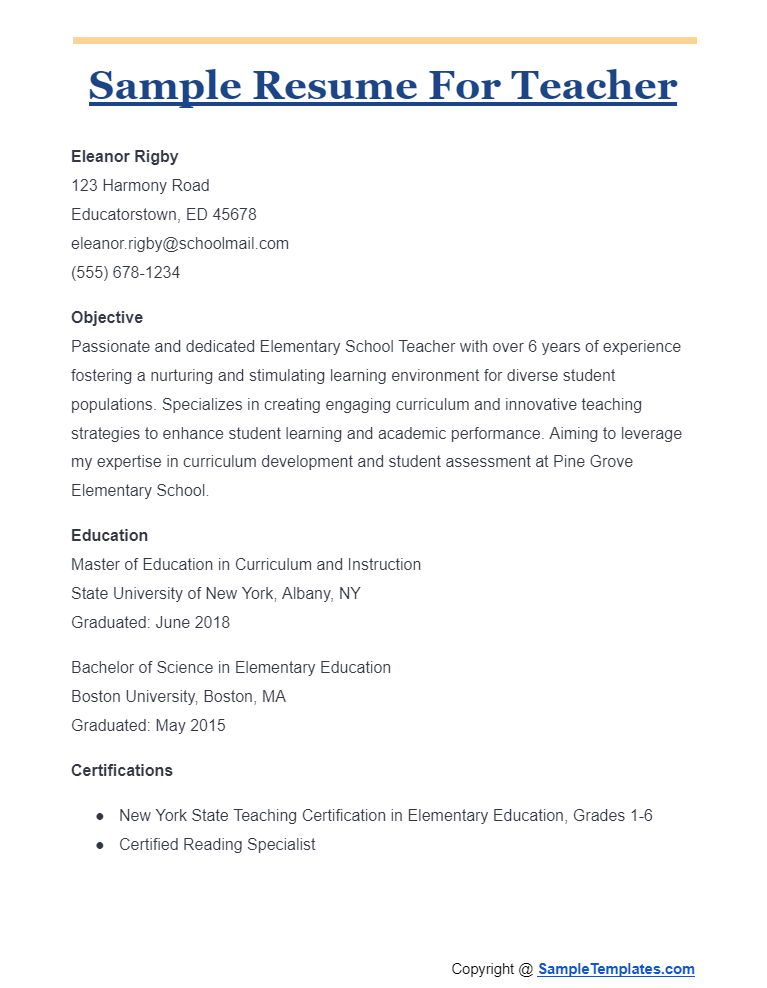
Browse More Templates On Sample Resume
High School Resume Template
Web Developer Resume Template
Professional Resume Template
Tips For Writing a Resume
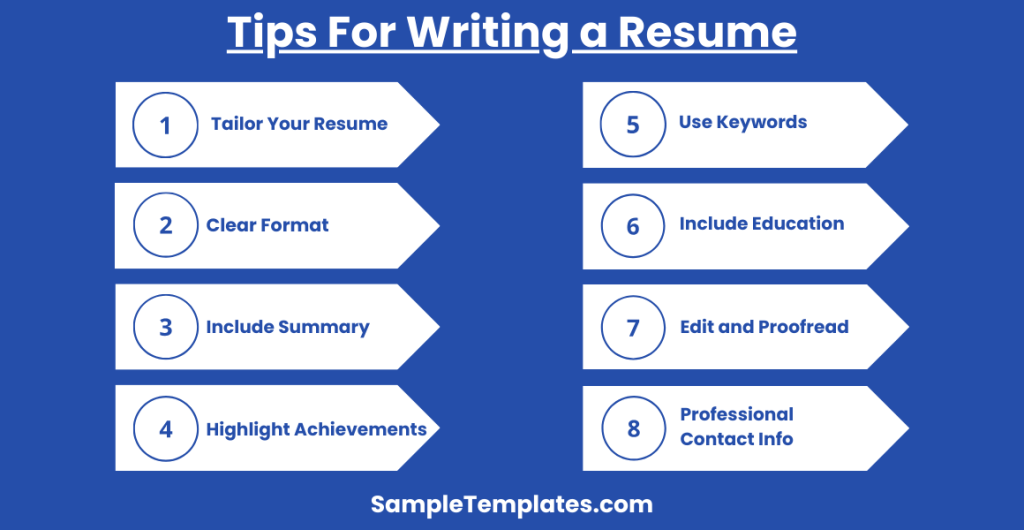
Writing a compelling resume is crucial for capturing the attention of hiring managers and securing job interviews. Here are eight tips to help you craft an effective resume:
- Tailor Your Resume to the Job: Customize your resume for each job application. Highlight the experiences and skills that are most relevant to the job description. This shows employers that you’re attentive to what they’re looking for and that you’ve taken the time to understand how your background fits their needs.
- Use a Clear and Professional Format: Ensure your resume is easy to read by using a clean, professional format. Stick to standard fonts like Arial or Times New Roman, and keep the font size between 10 and 12 points. Use bullet points to list your experiences and achievements, and make sure there is plenty of white space on the page to make it look uncluttered.
- Include a Summary Statement: Start with a brief summary that encapsulates your professional background, key skills, and what you can bring to the role. This section should be tailored to each job you apply for, reflecting how your skills and experiences align with the job description.
- Highlight Achievements, Not Just Duties: Instead of just listing the duties of your past jobs, highlight your achievements. Use specific examples and quantify your accomplishments when possible (e.g., “increased sales by 20%” or “managed a team of 10 people”). This demonstrates your effectiveness and impact in previous roles.
- Use Keywords From the Job Description: Many companies use Applicant Tracking Systems (ATS) to screen resumes. These systems scan resumes for keywords from the job description. Make sure to include relevant keywords throughout your resume to ensure it passes through the ATS and reaches a human reviewer.
- Include Relevant Education and Training: List your highest level of education, including the degree obtained, the institution’s name, and the graduation date. If you have certifications or have completed relevant training courses, include these as well.
- Edit and Proofread: Typos and grammatical errors can make a negative impression on employers. Carefully proofread your resume several times, and consider asking a friend or a professional to review it as well. This can help catch errors you might have overlooked.
- Use Professional Contact Information: Ensure that your contact information is up to date and professional. Use an email address that looks professional (ideally, one that includes your name), and make sure your phone number and any relevant professional networking profiles (like LinkedIn) are included and correct.
Following these tips can help you create a more appealing and effective resume, increasing your chances of getting noticed by employers and landing job interviews.
Experience Resume Template
Business Resume Template
Sample Accountant Resume Template
This sample resume has been crafted for those, who want to apply for a job of an accountant. You can follow this resume structure and writing style to create your own unique and attractive professional bio-data.
Sample Administrator Resume Template
The job of administration is vast, and such persons are required to have multitasking talents along with various other skills. Your resume should reveal your skills neatly, and for that use this template to craft your own resume.
How Do I Write My Own Resume?
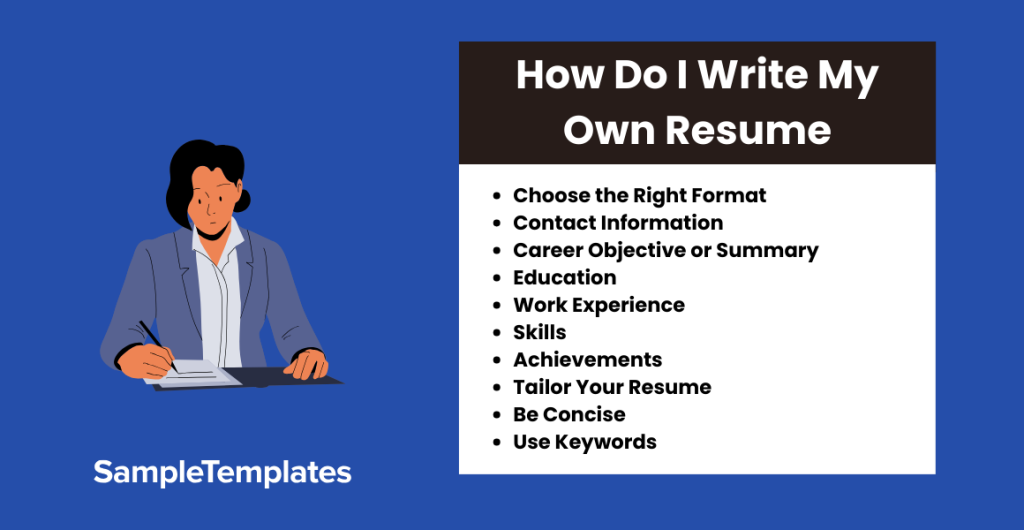
Writing your own resume is a crucial step in the job search process. Your resume is essentially a marketing tool that showcases your qualifications, skills, and experience to potential employers. Crafting an effective simple resume involves several key steps:
1. Choose the Right Format:
- There are various resume formats to choose from, such as chronological, functional, and combination (hybrid). Select the format that best highlights your strengths and aligns with your career goals.
2. Contact Information:
- Include your full name, phone number, email address, and, optionally, your LinkedIn profile or personal website if they are professionally relevant.
3. Career Objective or Summary:
- Write a concise career objective or summary statement that highlights your career goals and what you bring to the table. Make it tailored to the job you’re applying for.
4. Education:
- List your educational qualifications in reverse chronological order. Include the degree earned, institution, graduation date, and any honors or awards received.
5. Work Experience:
- Detail your work experience, focusing on relevant roles. Include the job title, the name of the employer, dates of employment, and a bulleted list of responsibilities and achievements.
6. Skills:
- Enumerate your relevant skills, both hard and soft. This section can include technical skills, languages, certifications, and any other competencies that set you apart.
7. Achievements:
- Highlight your achievements in each job you’ve held. Use action verbs and quantifiable results to make your accomplishments stand out.
8. Tailor Your Resume:
- Customize your resume for each job application. Match your qualifications to the specific requirements of the job posting. Emphasize the skills and experiences that align with the role.
9. Be Concise:
- Keep your resume concise and to the point. Aim for a length of one page for entry-level to mid-level positions and up to two pages for senior roles.
10. Use Keywords:
- Incorporate relevant keywords from the job posting. Many employers use applicant tracking systems (ATS) to screen resumes, and keywords can help your resume pass through ATS filters.
11. Proofread and Edit:
- Carefully proofread your resume for typos, grammatical errors, and inconsistencies. It’s also helpful to have someone else review it for feedback.
12. Formatting and Design:
- Ensure that your resume is well-organized and easy to read. Use a professional and legible font, consistent formatting, and bullet points to make it visually appealing.
13. Achievements over Responsibilities: –
- Focus on achievements rather than just listing job responsibilities. Highlight how you contributed to your previous employers’ success.
14. Be Honest: –
- Always be truthful in your resume. Misrepresenting qualifications or experiences can have negative consequences.
15. Proof of Claims:
- If you claim certain skills or qualifications, be prepared to provide evidence during interviews or assessments.
16. Seek Professional Help:
- If you’re struggling to write an effective resume, consider seeking help from a professional resume writer or using online resume builders and templates.
17. Continuous Improvement:
- Keep your resume up to date, adding new achievements and skills as they develop in your career.
Sample Agriculture Resume Template
Are you looking forward to applying for a job in agriculture communication sector? Try this sample resume to make your job application unique as well as attention grabbing. This well crafted and professional resume will definitely help you to find a good job.
Sample Collector Resume Template
To apply for a collector’s job, you need to write a professional resume, featuring your skills and potentials for handling the job with precision. Use this sample resume to follow a standard structure and professional writing tone to craft your own CV.
Sample Contractor Resume Template
A contractor quote has been recruited for a special time oriented job through the interviewing process. In order to make a good impression on the employer, you can use this sample resume to create your professional resume.
Sample Dentist Resume Template
In order to apply for the job of dentist in reputed healthcare centers or dental clinics, you need to undergo an interview process. Get an excellent advantage in an interview process with this sample dentist resume.
Sample Director Resume Template
Fresh recruitment as a business director is a complicated process. To find good business directors, resumes are often checked with precision. To create an impressive resume, you can follow the writing style of this sample director resume.
Sample Editor Resume Template
To apply for the job of an editor, you definitely need to have insightful technical knowledge. But, along with that, you need to have a good resume to create a first good impression in the minds of potential employers. You can use this sample resume for that purpose statement.
Sample Experienced Resume Template
This sample resume is suitable for any experienced personnel, who want to apply for a new job analysis in a new company. It features experience and professional achievements.
Sample Guard Resume Template
You can apply for a position of a security guard with this properly formatted and simple looking resume template or sample. The document is available in PDF format, and it is customizable.
Sample Lawyer Resume Template
This sample resume is for those, who want to apply for the job of a lawyer for a company. Follow the structure and format of this resume to create an attention-grabbing resume.
Sample Management Resume Template
Management jobs are growing and with various emerging businesses new scopes for management jobs are opening up. To take advantage of this scenario, you need a good resume to apply for the post of manager. Use this resume sample to apply for management review related job.
Sample Student Resume Template
Students can use this resume sample to create their own bio-data. To apply for higher studies or to apply for the job of a research analysis fellowship, students require a well-structured resume. Use this resume sample to create a resume, featuring your competence and educational achievements.
Sample Professor Resume Template
If you want to apply for the job of a professor to a college or institution or university, you need to have a perfectly written resume. This resume sample is customizable and easy to be printed.
Sample Researcher Resume Template
Available in PDF format, this sample resume is crafted for the researchers. If you are applying for a job of a researcher, you can surely craft an excellent resume with this sample or template.
Sample Animator Resume Template
As an animator, you need to show you skills and achievements through your professional resume, while applying for the job. For that purpose, simply use this resume sample. It is formatted neatly and written in engaging professional tone.
Sample Architect Resume Template
If you want to apply for the job of an architect, instead of going for cheap as well as erroneous online resume builders just choose this free resume sample. Use the sample to write your own professional bio-data.
Sample Designer Resume Template
As a designer, you need to apply for a job with a strong and interesting resume. It is important to showcase your works or portfolio, but the first impression will be created by your resume. So, craft your CV with precision, following this sample format.
Sample Engineering Resume Template
To apply for the job of engineering in any field, like civil or mechanical, you can use this resume example to craft your own unique Curriculum Vitae. The sample follows a standardized structure and professional tone of writing.
Sample Receptionist Resume Template
A job for a receptionist is always competitive. You need to come out with a powerful resume to qualify for the job of receptionist. Use this template to build your resume and get the much-required attention of the potential employers.
Sample Sales Resume Template
A sales executive needs to build his or her resume with perfection. It should look professional and it should include all your achievements as a sales executive. To build a powerful resume, using this free PDF sample can prove to be effective and time-saving.
Sample Internship/Trainee Resume Template
Build a simple yet professional looking resume within the quickest frame of time with this sample internship or trainee resume. This resume is available in printable PDF format, and you can customize it as per your requirements.
Sample Graduate Resume Template
Build your own resume after your graduation programs with the help of this excellent sample or template for CV. Using this template will save your time, and at the same time, you will be able to create a professional CV.
Sample Entry Level Resume Template
For entry level employees, it is important to build their own resume in perfect format. This sample resume comes with simple and short structure. It maintains professional tone so that employers can find it interesting.
Sample Fresher Resume Template
General Student Resume Template
Fresher generally struggles to write a good resume. They should opt for online resume sample to craft their professional bio-data. It does not only save time, but also make the resume powerful enough to impress the potential employers.
What is the Purpose of Writing a Resume?
A Sample Resume is considered as an important professional document, which is often analyzed by the employers to find the strength, weakness, and compatibility of the job applicants. Ideally, it should reflect skills of the job applicant for a particular job role. Employers use resumes to screen the most skilled and qualified job applicants. After screening, they are called for an interview so that recruitment process can be completed.
So, resume plays an important role in the first phase of job selection process. To qualify for the interview round for a job, you need to craft your resume with perfection. A resume is also a professional document that you can send to potential employers.
How to write a Professional Resume?
A Professional Resume has to be written with precision, and it often comes with a proper structure. Without proper structuring, resume carries zero values. Ideally, a resume starts with the name of the person and a few personal details about the person, like address, phone number, email address, etc.
It is absolutely important to enter the contact details with perfection so that potential employers can communicate with you without facing hassles when they would require hiring someone for their companies. After personal details and name, a resume should talk about the person’s professional objective or goals. It should be a precise statement, but at the same time it should be powerful and attention grabbing.
What are the Common Mistakes that People make while Writing a Resume?
Though Microsoft Resume is an important tool for applying for a job, people make a lot of mistakes in writing their resume. Different people make different types of mistakes, and some mistakes can lead to costly consequences. Even after having full potential, people fail to create impressions in the minds of employers due to bad quality resume or curriculum vitae. The commonest error of writing resume is not including contact details.
Even if the employer likes your resume, he cannot communicate with your due to this silly error. Many people do not type the phone number or contact details properly. You should take adequate time to craft it with precision and passion. It helps to avoid possible chances of errors too. Grammatical mistakes are also considered to be costly errors. A resume should not appear to be fake rather it should look genuine.
How to Craft Better Resumes?
The reason for writing resume is qualifying for a particular job, offered by an employer. There are many things that make a resume good enough to grab the attention of the potential employers. Knowing these things or factors with perfection will help writing better resumes. So, basically writing a resume is an art. You need to master the skills to practice this art. A professional resume should include all important details of a person or job applicant. Including everything does not mean including the unnecessary stuff.
Rather including unnecessary information creates bad impressions in the minds of the potential employers. A resume should be written for a particular job. For example, you cannot use a resume written for accountant’s job for the purpose of applying for web or graphic designer’s job. Every resume should look and feel unique as well as authentic. Keeping things simple and lucid is important.
Why Should you use Resume Samples?
As stated in above sections, a professional resume should come with a proper format and size. Not just writing tone, but the formatting is considered as very important for resume writing. Overall, it can be said that writing resume is not an easy job. It is not difficult, but not as easy as we often perceive. Many people opt for writing resume just before the night of going to the interview. Writing resume without preparations and within a rush will surely lead to poor results. You may also see College Graduate Resumes
When employer will find your resume has been written non-professionally, they will turn down your job application sample. In spite of having professional competence and educational abilities for the job role, you shall miss the opportunity to crack the job. In order to get importance with your job application, your resume should be crafted in utmost professional style. Downloading free resume sample could be effective in doing that. Using resume examples makes the job of writing resume easier as well as more effective.
What are the Common Myths with Resume Writing?
Resume writing is not an easy job – at least not as easy as we often consider it. It can be a little confusing at time, and a lot of myths with resume writing have further made things quite complicated. In order to learn the art of writing CV or Resume, you need to know the myths that are connected with resume writing. Learning them and avoiding them will help you to create better and attention-grabbing resume. You may also see Designer Resumes
For example, the common myth is that a resume has to be short. It is obvious that resume needs to be short and precise. But, the important thing is stuffing all necessary information. If stuffing information makes resume 2-3 pages, then there is no problem with that as long as your resume furnishes important and relevant information. Many people think writing hobbies is a special advantage. Well for a few jobs that true, but unnecessarily stretching hobbies column looks nonprofessional. You may also see Software Developer Resumes.
How do I write my own resume?
To write your resume, choose the right format, include contact information, a career objective, education, work experience, skills, and achievements. Tailor it to the job you’re applying for.
What resume format is best?
The best resume format depends on your career history. Chronological is common for steady career progression, while functional highlights skills. A combination format offers flexibility.
Can a resume be 2 pages?
Yes, a resume can be two pages, especially for candidates with extensive work experience. It’s crucial to keep the content relevant and impactful.
At the conclusion, it can be said that only a few people have mastered the art of writing their professional Bio-data or Resume. However, a resume is an essential tool for everyone. Without a good resume, you would not be able to qualify for a good job. Thus, to build your resume with a precision you can use basic resume samples or templates.
If you have any DMCA issues on this post, please contact us!
Related Posts
-
FREE 8+ Minimalist Infographic Resume Samples in DOCX | PDF | PSD | AI | Publisher | Pages | Indesign
-
FREE 9+ Professional Web Developer Resume Samples in PDF | MS Word
-
FREE 14+ Carpenter Resume Samples in PDF | MS Word
-
FREE 11+ Retail Assistant Manager Resume Samples in PDF | MS Word
-
FREE 9+ Resume Writing Samples & Templates in PDF | MS Word
-
FREE Top 20 Resume Tips That Will Help You Get Hired [ with Samples, Guides, and Tips ]
-
FREE Impactful Resume Updates [ With Samples ]
-
FREE 6 Resume Mistakes That Can Ruin Your Job Search
-
FREE Resumes for Career Changers and Tips to Making Your Transition Smooth
-
FREE What to Include in a Resume If You Lack Experience [ With Samples ]
-
FREE 4+ Quick Fixes to Long Resume Samples & Templates in PDF
-
FREE How Long Should My Resume Be? [ With Samples ]
-
FREE 42+ Manager Resume Templates in MS Word
-
FREE 9+ Sample CNA Resume Templates in MS Word | PDF
-
FREE 42+ Executive Resume Templates in PDF | MS Word | Pages
